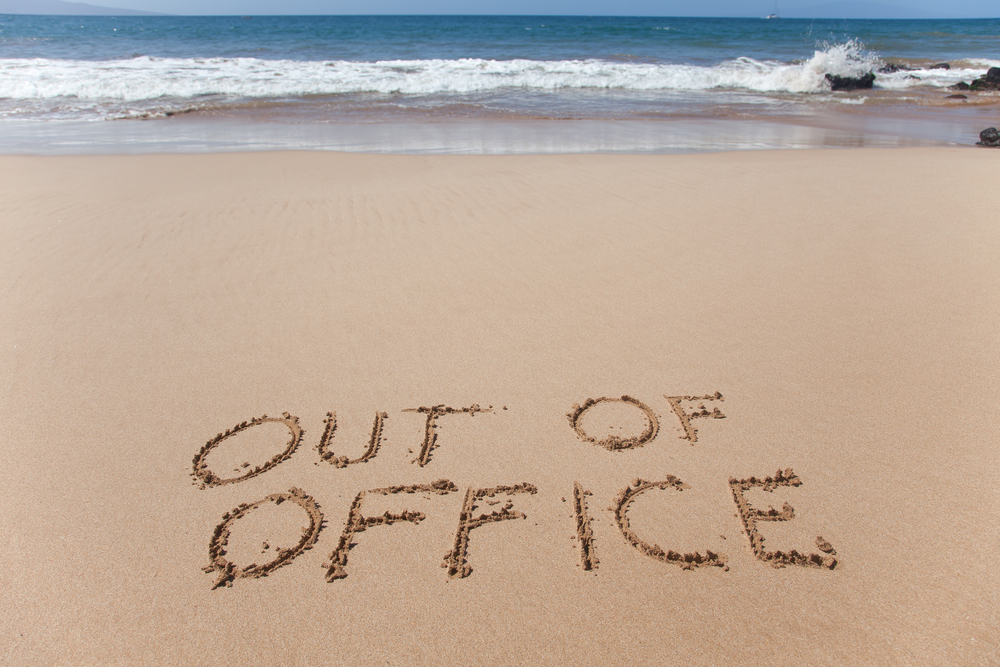How does someone with both a Bachelor’s and Master’s degree in nutrition end up 130lbs overweight?
Slowly.
Unconsciously.
“I felt very ashamed to say I have the background and the knowledge, but yet here I am at 260 pounds,’ ” Charmaine Jackson said in an interview with CNN in 2013. “I was like the hairdresser who doesn’t have good hair.”
Jackson’s moment of truth came when she unexpectedly got laid off from her marketing job and realized she needed to do something about her life. In her 40s at the time, she hated the way her body looked and felt and, like many of us, wanted to make a change.
So she did what most people in this situation do: she joined a gym, but she quickly realized that adding exercise wasn’t going to be enough.
She decided to start journaling, tracking not just the food aspects of what she ate, but how she was feeling, her sleep and her patterns around when she reached for food.
“(Journaling has) really helped me get an idea of what my behaviors are, what my patterns are, how I can make change for myself for good,” she said. “You wouldn’t see it unless you look at it over time and you really get a chance to see this worked and why.”
There’s a key phrase there: over time.
Journaling isn’t a quick fix.
In fact, much of what you might discover when you first start will likely shock you.
Like how often you’re snacking – how you reach for food when you’re bored or triggered.
Like the portion sizes you choose without realizing. Or how you eat past satisfaction to overfulness.
Some of it might be how you eat “healthy” foods in public or around others but then secretly binge in private.
Or how you’re exhausted and crave some down time but turn to sugar or caffeine to prop your energy up at key moments during your day.
Sometimes it will be how the events and people in your life make you feel and how you’ve been using food as a source of pleasure, comfort or avoidance.
Over 5 years, the increased awareness her journaling habit created allowed Jackson to all but effortlessly shed 130 lbs (half her body weight at starting) and keep the weight off without feeling restricted.
Her experience is backed by research (though there isn’t as much of it as you’d expect given how nearly 1 to 2 adults globally out of every 5 are actively trying to shed pounds; most research tends to focus on individual diets and calorie tracking).
Dr. Jessica Bartfield, a bariatrician at Loyola University Health System who sees both surgical and nonsurgical patients battling their weight, confirms that sustained, permanent weight loss is far more complex than just calories in, calories out. In her experience, journaling can really change a person’s weight loss trajectory.
Counting calories is one aspect of that, she says, but other factors are tracking the gaps between your meals, fluid intake and what you’re drinking, sleep habits, and most of all, emotions.
So what do you actually write about in your journal if you’re trying to lose weight?

There hasn’t been enough research done to definitively say “this one method with these specific questions works”. In fact, though most journaling for weight loss methods that have been studied have at least some tracking of the actual food and fluids consumed (often quite detailed), this doesn’t even have to be the case.
In an article published in Women’s Health Magazine, one woman, Jamie Mendell, shared how she lost 40lbs thanks to her “real, honest journaling” that had nothing to do with keeping a “food diary”.
(I included a link to the article so you can check my sources for yourself, but I can’t help but be aggravated that the third paragraph of that thoughtful article is a now (thankfully) dead link to some program that promises belly fat loss in as little as two weeks.
Ugh.
With weight loss speed is seldom your friend.
But I digress…
Raw and honest.
Jamie Mendell, realized she’d gotten very disconnected from what made her life worth living and a decade of dieting and binge eating had left her self esteem in the toilet. She started journaling as a way to connect back up with joy – “to daydream and get excited about life again”.
Her journaling led her to reflect on what really lit her up and brought her joy. And also on what she needed to cut out of her life. And (this is crucial), she didn’t stop at the writing:
She took action and made changes in her life.
She stopped turning to food to fill a void that had nothing to do with energy balance. She filled up her pleasure tank with healthy relationships and travel and creative projects. Now food took its rightful place as fuel and just one of the many ways she nourished herself.
As a result, the weight melted off her – almost without conscious effort. And it hasn’t been a struggle to keep it off.
Prompts for your own reflection:
- Why do I want to get healthy and be slim? Focus on non-weight- or size-related outcomes. Research done by Dr Michelle Segar (shared in her excellent book “No Sweat”) indicates that those who exercise specifically for the purpose of weight loss and better health tend to move 32% less than those who exercise because they want to be stronger or explore more activities with loved ones or have adventures.
In other words, what you see on the scale or in the mirror might be a legitimate factor – maybe some scary blood work might be a motivator too – but in order to have a juicy enough why that will help you stay the course, you must look for benefits that go beyond just weight, size and “fixing your health”.
What do you actually want?
Spend some time painting yourself a picture of what your life would look like if you were in vibrant health. Here are some questions to help you if you get stuck:
– How would you feel in your clothes?
– How would you feel while exercising or moving?
– What will you have access to now that you’re in vibrant health?
– How will you feel when you look at yourself in the mirror?
– What do you believe about yourself now that you’ve achieved this transformation? What is different from how you feel about yourself now
– What is fun for you now?
(you can download a more detailed version of these prompts as a free printable here). - Track everything that crosses your lips for a week
– Track what you eat (be specific and list portion sizes in a metric that makes sense to you – eg “half a cup of oatmeal” or “1 tbsp butter”).
– Track how you feel while you’re eating (are you rushed, calm, nervous, bored?)
– Track where you are while you’re eating (standing at the counter, sitting on the couch, etc)
– Track who you’re with (boyfriend, kid, alone, etc)
– Track how you feel when you’re done eating (satisfied, bloated, overfull, etc)
I’ve done this exercise and it’s illuminating. I was careful to merely observe at first (instead of trying to change things) and I saw immediately how much I ate that I wasn’t really hungry for (even though I never binged or ate to the point of physical discomfort). I discovered there could be almost an entire meal’s worth of space between “satisfied and no longer hungry” and “full”.
I also realized that I often snacked when I was bored or while I was waiting for things (like being on hold with the bank or keeping my son company while he did a homeschool assignment).
I realized how easy (and painless) it was for me to shave 200-400 calories worth of food (I only actively tracked calories for 2 days towards the end because I got curious) off my daily eating without really noticing a difference.
Like Charmaine Jackson at the beginning of this article, this type of journaling is more about noticing our patterns without judgement and then choosing to gently and lovingly shift them. - How can I love my body more?
Set a 10 minute timer and free write without stopping until the timer goes off. Don’t worry about grammar, punctuation or spelling mistakes. You’re working to outrun your inner critic and gatekeeper, so speed and flow are your friends. Don’t let your hand stop (even if you have to write “I don’t know how to love my body more” or you have to write out the question again every 2-3 sentences).
This was a huge one for me. At nearly 30 lbs over my pre-pregnancy weight (6 years postpartum), I had developed a terrible habit of hating on my heavier body that wasn’t as strong and didn’t move as lithely as it had when lighter.
I struggled with loving what I saw in the mirror or how I felt in my pants because I was receiving the suggestion to “love my body as it is” as “love this extra fat” and I couldn’t authentically do it.
But one day, while pondering, “how can I love my body more?” I had an epiphany. I was loving the essence of my body – the part of me that was vibrant and healthy and gorgeous. The body that works tirelessly to keep me alive each day – the one that beats my heart and fires my neurons and makes my hair grow.
That was the body I needed to connect to and love.
Making this connection drastically changed how I evaluated my decisions moving forward. What I was willing to put my body – my ally and my one true possession this life – through. It allowed me to relax timelines and give myself all the second chances I needed. It meant I would no longer be intimidated into restrictions or overtraining. That I could go slow and have fun along the way.
That I was allowed to find my way and make as many mistakes along the path as were needed. - How do I enjoy moving? What are my favourite OTMs?
I referenced the book “No Sweat” earlier and in it, Dr Michelle Segar, one of the world’s leading experts on what motivates people to choose and maintain healthy behaviours, shares the term “OTM”. It stands for “opportunities to move” and it represents a mindset shift that often has folks who have always hated exercise finally finding ways to love the process of losing weight.
Most folks who are exercise-resistant choose exercise that is the most “efficient” way to lose weight. In other words, they’re focused on the goal (weight loss) and not the process (what they need to do each and every day).
One of the changes Segar gets her clients to make is to realise that there are opportunities to move or OTMs everywhere. You can take the stairs, bike to work, park further away, walk all your phone calls, garden, spring clean, even have “walk-and-talks” instead of coffee dates.
The magic of OTMs is multi-fold: not only do you not have to schedule hours at the gym (unless you want to), but other research has shown that hotel maids who believed that they were exercising while doing their usual chores lost more weight and saw improvements to health markers like blood pressure than their counterparts who did the same chores but didn’t think of them as exercise!
In other words, getting up off the couch and changing the channel (when combined with a hundred other small, seemingly insignificant increases in your daily movement habits) might be enough to replace a structured workout (at least for the movement component). Later, once OTMs are a baked-in habit, you can choose to add actual workouts for specific objectives like building strength and mobility. But only if you want to.
So make a list of your favourite ways to sneak in movement. I loved this prompt because it appealed to my rebel personality and I really enjoyed moving more because it made me feel like I was “gaming the system” somehow and winning. - What worked? What needs improvement? What did I learn?
This is a prompt to use once a week to review how the previous week has gone. I like to do this one on a Sunday when I’m reflecting on the week past and preparing for the week to come.
It is absolutely crucial to ask these questions with a sense of relaxed or neutral awareness; a sort of exploratory curiosity – rather than the blame and shame that might be a habit.
Your job is to notice what happened. What you did right (I needed to rebuild this muscle for myself). I realized that with eating and exercising, I had developed a habit of over optimization and perfectionism that had me crippled because no matter how many things I got right, I would invariably screw something up and then beat myself up for it.
No bueno.
Journaling helped me create the space to notice that I was making lots of positive changes even while imperfect. It allowed me to calmly reflect on triggers if I went off the rails.
Again, give yourself time and all the second chances you need.
For example, one week I noticed that when I don’t have food in the fridge that is healthy and that I find appealing, I’m more likely to eat junk.
It took me another three weeks to fully dial in the schedule of how often I needed to shop for and cook so that my fridge was appropriately stocked.
Before this style of journaling (ie with curiosity and relaxed awareness), I would have beaten myself up and felt miserable and stressed no matter how many positive actions I took. I’d have felt defeated and been more vulnerable to trying something extreme or restrictive.
Giving myself permission to take all the time I need and make as many mistakes as happen along the way allowed me to wake up to my way.
This takes courage.
And a safe space to explore what’s actually going on and your responses to it.
A journal can be that.
Looking for a printable that allows you to download just the prompts above for easy access? Click here. And tell me in the comments what resonated and what you’re discovering in your own process.





